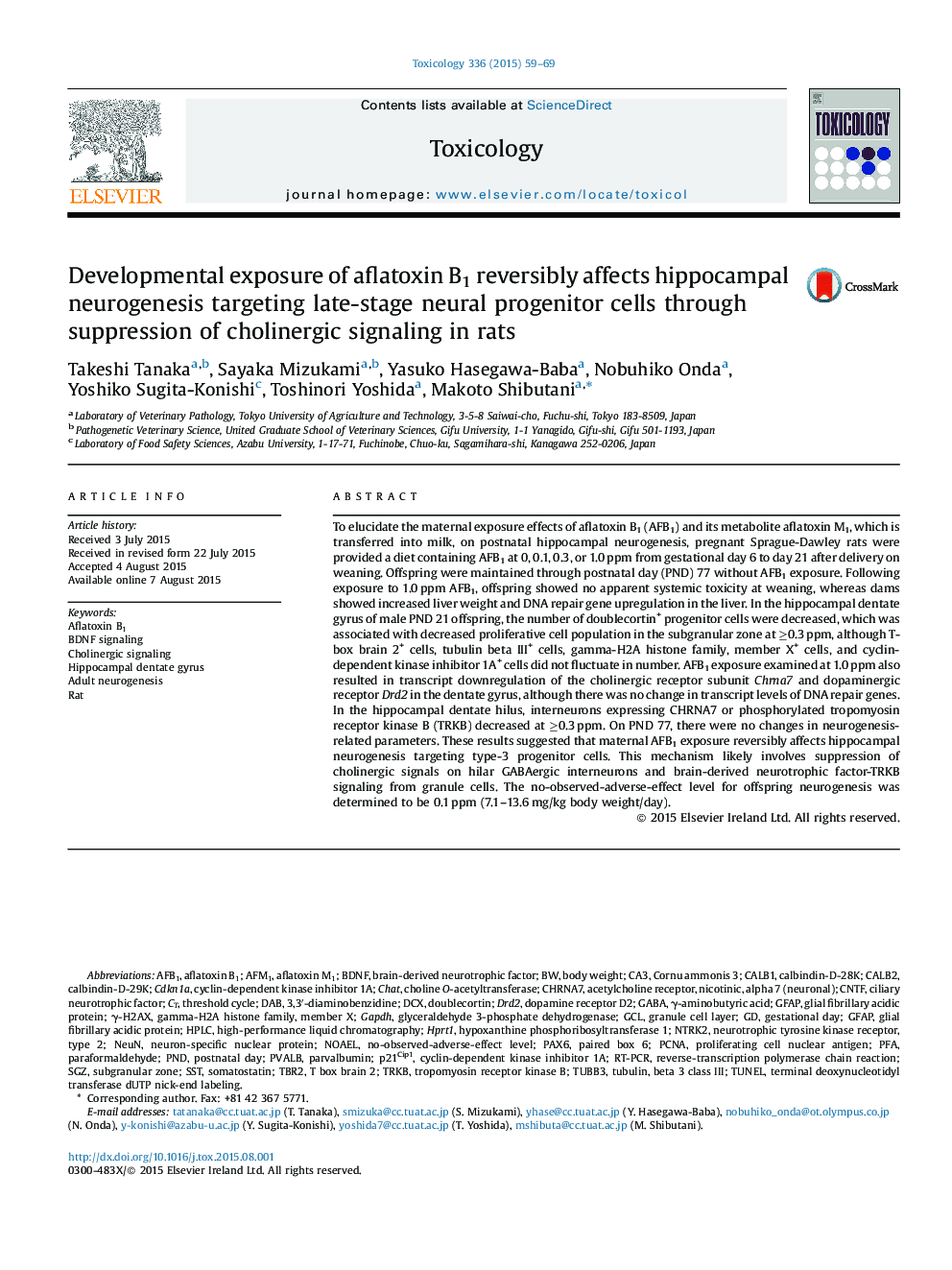| کد مقاله | کد نشریه | سال انتشار | مقاله انگلیسی | نسخه تمام متن |
|---|---|---|---|---|
| 5858977 | 1562320 | 2015 | 11 صفحه PDF | دانلود رایگان |

- Maternal AFB1 exposure effect on hippocampal neurogenesis was examined in rats.
- AFB1 reversibly reduced cell proliferation and type-3 progenitor cells in the SGZ.
- Suppressed cholinergic signals to GABAergic interneurons may reduce type-3 cells.
- Suppressed BDNF-TRKB signaling may contribute to aberration of neurogenesis.
- The NOAEL for offspring was determined to be 0.1 ppm (7.1-13.6 μg/kg BW/day).
To elucidate the maternal exposure effects of aflatoxin B1 (AFB1) and its metabolite aflatoxin M1, which is transferred into milk, on postnatal hippocampal neurogenesis, pregnant Sprague-Dawley rats were provided a diet containing AFB1 at 0, 0.1, 0.3, or 1.0 ppm from gestational day 6 to day 21 after delivery on weaning. Offspring were maintained through postnatal day (PND) 77 without AFB1 exposure. Following exposure to 1.0 ppm AFB1, offspring showed no apparent systemic toxicity at weaning, whereas dams showed increased liver weight and DNA repair gene upregulation in the liver. In the hippocampal dentate gyrus of male PND 21 offspring, the number of doublecortin+ progenitor cells were decreased, which was associated with decreased proliferative cell population in the subgranular zone at â¥0.3 ppm, although T-box brain 2+ cells, tubulin beta III+ cells, gamma-H2A histone family, member X+ cells, and cyclin-dependent kinase inhibitor 1A+ cells did not fluctuate in number. AFB1 exposure examined at 1.0 ppm also resulted in transcript downregulation of the cholinergic receptor subunit Chrna7 and dopaminergic receptor Drd2 in the dentate gyrus, although there was no change in transcript levels of DNA repair genes. In the hippocampal dentate hilus, interneurons expressing CHRNA7 or phosphorylated tropomyosin receptor kinase B (TRKB) decreased at â¥0.3 ppm. On PND 77, there were no changes in neurogenesis-related parameters. These results suggested that maternal AFB1 exposure reversibly affects hippocampal neurogenesis targeting type-3 progenitor cells. This mechanism likely involves suppression of cholinergic signals on hilar GABAergic interneurons and brain-derived neurotrophic factor-TRKB signaling from granule cells. The no-observed-adverse-effect level for offspring neurogenesis was determined to be 0.1 ppm (7.1-13.6 mg/kg body weight/day).
Journal: Toxicology - Volume 336, 2 October 2015, Pages 59-69